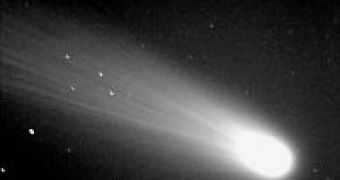The Ursids meteors shower usually begins on the 17th of December every year, and lasts for more than a week, until 25th or 26th of December. Its name comes from the point where it seems to radiate, which is somewhere near the star Beta Ursae Minor, in the constellation of Ursa Minor, also known as the Little Dipper. It is provoked by the passing of the periodical comet 8P/Tuttle, and though in other years the meteor shower had a relatively low activity, this year is thought to be rather remarkable.
Unlike other well known popular meteor showers which occur every year, the Ursid is somehow a mystery to most people, as the 8P/Tuttle comet returns to the inner regions of the solar system every 13.6 years, leaving behind debris which are captured by Earth's gravitational fields, and hit the atmosphere at speeds as high as 35 kilometers per second.
Another odd property of this meteor shower is that it is more frequently heard on the radio, rather than seen on the night sky. People using long distance radio stations hear brief 'pings' in the sound, while the radio wave emitted by the radio station hits the ionized trail of gas, left behind by the passing of the meteors through the atmosphere.
Scientists believe that the dust trail, which we encounter every year in our path around the Sun, was probably ejected by the comet around the year 300 to 900 AD. However, it takes a long time for the dust to move from the orbit of the comet to that of the Earth. As the dust emission from the comet passes close to the planet Jupiter, its gravity can greatly affect the path of the dust cloud, especially if the encounter occurs just after the debris has been ejected, and the cloud is still relatively concentrated.
In order to take advantage of this year's meteor shower, and to verify the models regarding how particles of dust emitted by the comet behave before they hit Earth's atmosphere, NASA designed a mission that would involve flying an aircraft in the early morning of the 22nd of December, from the north to the western regions of Alaska. It would stay in the shadow of the Earth and avoid the Moon at the same time, in order to make observations of the content of elements, and the ranges of the meteorites entering Earth's atmosphere, and to compare them to how the 8P/Tuttle comet looks like today.
The comet responsible for the Ursid meteor shower, 8P/Tuttle, is currently located in the Cepheus constellation and is visible with a pair of binoculars or naked eye. 8P/Tuttle is comparable in size to the comet Halley, however it is not as visible as the latter, due to the fact that it does not emit high amounts of debris as it comes in the close proximity of the Sun.

 14 DAY TRIAL //
14 DAY TRIAL //